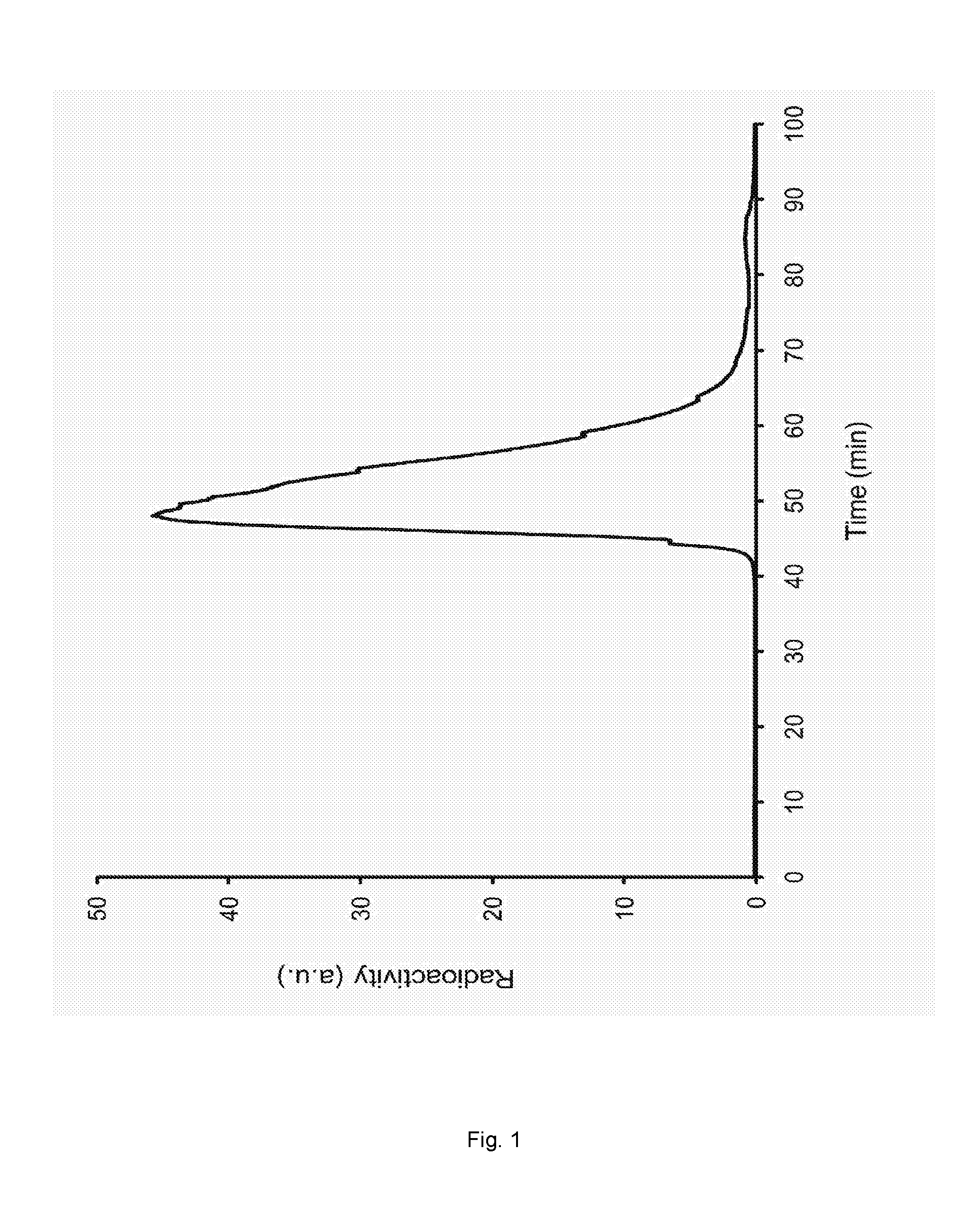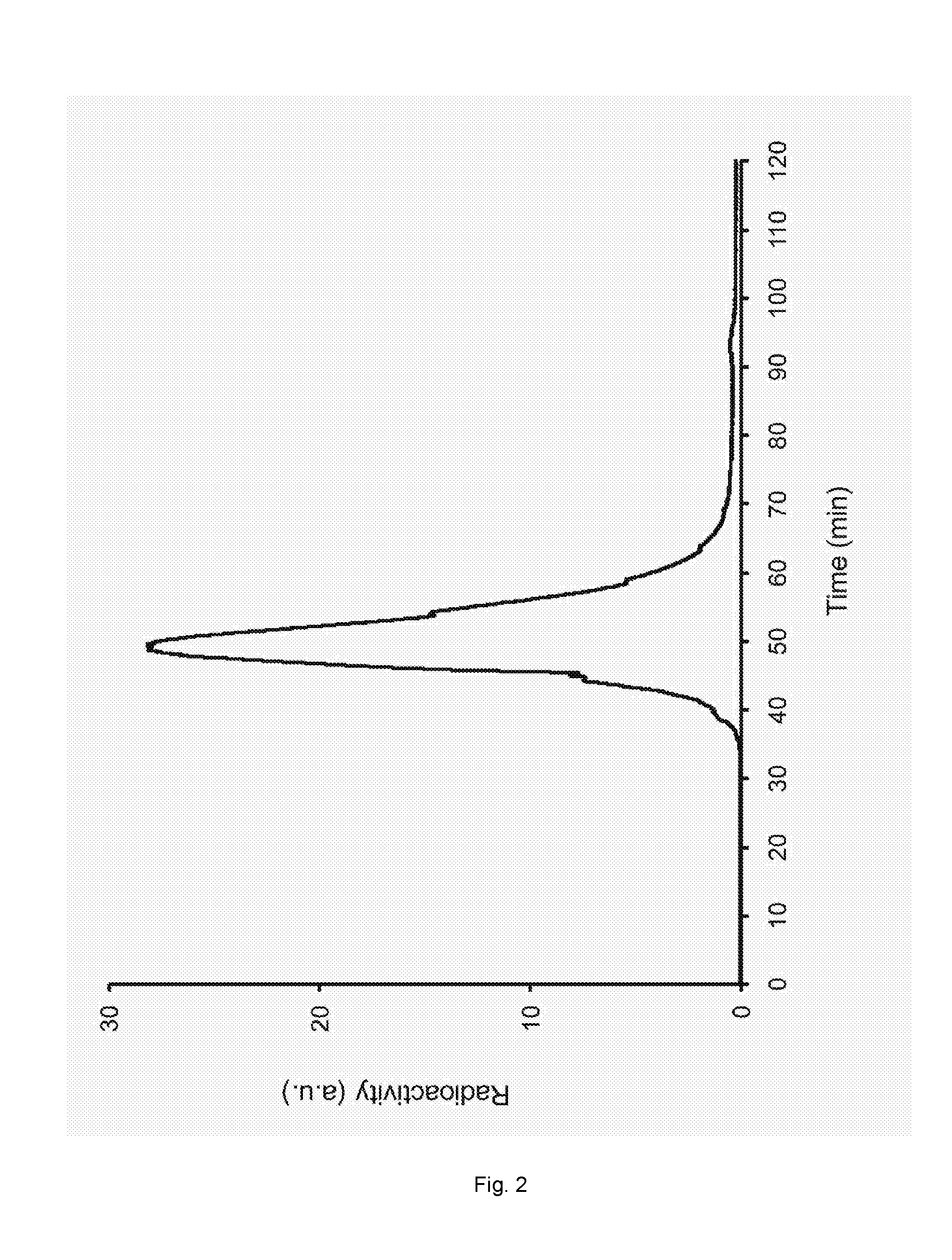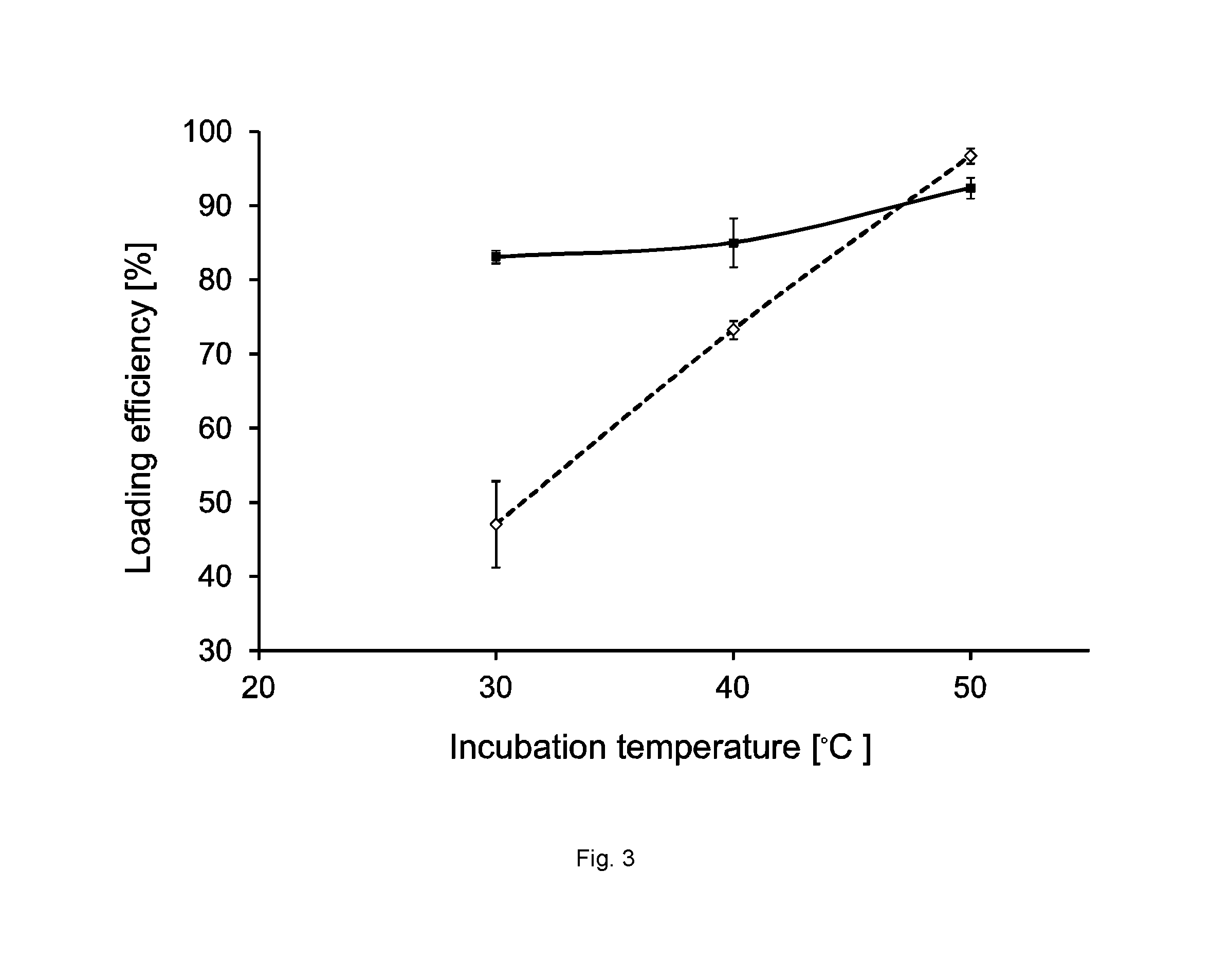Entrapment of Radionuclides in Nanoparticle Compositions
- Summary
- Abstract
- Description
- Claims
- Application Information
AI Technical Summary
Benefits of technology
Problems solved by technology
Method used
Image
Examples
example i
Improved Loading of 64Cu and / or 177Lu into Liposomes Comprising a Chelating Agent
Preparation of Liposome Composition Containing Chelating-Agent:
[0250]Chelating-agent (DOTA) was trapped within the liposomes consisting of 1,2-disteraroyl-sn-glycero-3-phosphocholine (DSPC), cholesterol (CHOL) and 1,2-distearoyl-sn-glycero-3-phosphoethanolamine-N-[methoxy(polyethyleneglycol)-2000 (DSPE-PEG-2000) in the molar ratio 50:40:10 using standard thin-film hydration and repeated extrusions. Briefly, the lipids were mixed in chloroform and dried to a lipid-film under a gentle stream of nitrogen. Organic solvent residues were removed under reduced pressure overnight. The lipid-film was dispersed by adding an aqueous solution—a HEPES buffer (10 mM, 150 mM NaCl, pH 7.4) containing the chelating-agent, DOTA, adjusted to either pH 4.0 or pH 7.4 with a concentration of 10 mM and the osmolarity was measured to be 325 mOsm / L. The solution was then hydrated at 65° C. for 60 min. Multi-lamellar vesicles (M...
example ii
Preparation of Liposome Composition Containing Chelating-Agent for Cu(II)-Loading
[0256]The loading of non-radioactive Cu2+ into chelator-containing liposomes was tested, and evaluated by using an ion Cu(II)-selective electrode. The electrode converts the activity of Cu2+ dissolved in a solution into an electrical potential, which is measured by a voltmeter or pH meter. Thus the Cu(II)-selective electrode responds to un-complexed Cu2+ ion activity. The sensing part of the electrode is made as an ion-specific membrane, along with a reference electrode.
[0257]Chelating-agent (DOTA) was trapped within the liposomes consisting of DSPC, cholesterol and DSPE-PEG-2000 in the molar ratio 50:40:10 using standard thin-film hydration and repeated extrusions. Briefly, the lipids were mixed in chloroform and dried to a lipid-film under a gentle stream of nitrogen. Organic solvent residues were removed under reduced pressure overnight. The lipid-film was dispersed by adding an aqueous solution—a HE...
example iii
[0261]To test whether the ionophore free loading method was limited to divalent cations, the two radioactive trivalent cations, 177Lu3+ and 111In3+, were tested. Loading of the radioactive pertechnetate (99mTc), was also tested. 99mTc is an oxoanion with the chemical formula TcO4−. Successful loading of both 177Lu3+ and 111In3+ in into chelator-containing liposomes without using ionophores was obtained. In contrast no loading was observed of 99mTcO4− (see Table 1).
[0262]The chelator-containing liposomes consisted of DSPC / CHOL / DSPE-PEG2000 in the molar ratio 50:40:10. An isotonic HEPES buffer (10 mM HEPES, 150 mM NaCl, pH 7.4, 300 mOsm / L) was used as exterior buffer, and a HEPES buffer containing chelator (10 mM DTPA or DOTA, 10 mM HEPES, 150 mM NaCl, pH 7.4) was used as interior buffer. Approximately 10 μL of radioactive 177LuCl3, 111InCl3 or 99mTc pertechnetat was added to purified chelator-containing liposomes (500 μL) followed by incubation for 60 min at 50-55° C. The radioactive...
PUM
| Property | Measurement | Unit |
|---|---|---|
| Temperature | aaaaa | aaaaa |
| Temperature | aaaaa | aaaaa |
| Temperature | aaaaa | aaaaa |
Abstract
Description
Claims
Application Information
 Login to View More
Login to View More - R&D
- Intellectual Property
- Life Sciences
- Materials
- Tech Scout
- Unparalleled Data Quality
- Higher Quality Content
- 60% Fewer Hallucinations
Browse by: Latest US Patents, China's latest patents, Technical Efficacy Thesaurus, Application Domain, Technology Topic, Popular Technical Reports.
© 2025 PatSnap. All rights reserved.Legal|Privacy policy|Modern Slavery Act Transparency Statement|Sitemap|About US| Contact US: help@patsnap.com



